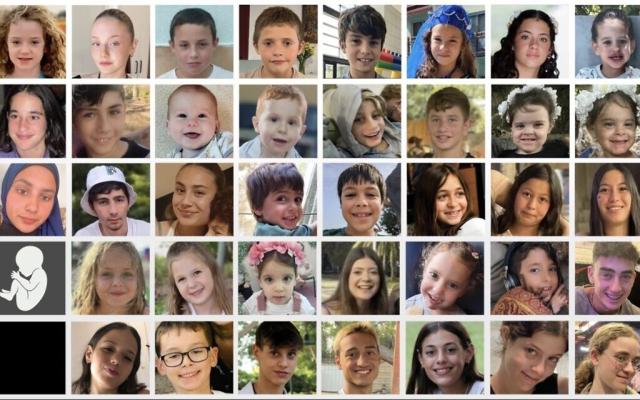In a notable development, Israel's security cabinet is preparing to deliberate on a proposed deal with Hamas, marking a critical juncture in the ongoing conflict. The Prime Minister's Office has organized a series of consequential meetings, starting with the War Cabinet at 6:00 p.m., the Political-Security Cabinet at 7:00 p.m., and culminating with a Government meeting at 8:00 p.m. This sequence of discussions indicates the gravity of the situation, although it's anticipated that some cabinet members may voice their dissent regarding the proposed arrangement.
Expressing a cautiously optimistic outlook, the Prime Minister, in a recent engagement with military personnel, hinted at positive developments, stating, "I hope there will be good news soon." This statement was reinforced by an official communiqué from the Prime Minister's Office, which underscored the critical nature of the discussions focusing on the release of Israeli captives. The proposed deal, mired in controversy due to its inclusion of a prisoner exchange involving terrorists, is poised to undergo rigorous scrutiny and requires the Israeli government's endorsement. The deal's divisive nature suggests it might encounter substantial opposition within the government echelons.
53 hostages to be released. 40 kids and 13 mothers. This appears final. Deal imminent.
— Jonathan Schanzer (@JSchanzer) November 21, 2023
During a meeting with the Reserve Battalion 8101, commonly known as the Alexandroni Brigade, who have recently concluded their deployment along the eastern Lebanese frontier, Prime Minister Netanyahu articulated the strategic objectives of the ongoing conflict. He underscored the imperative of dismantling Hamas, highlighted the ongoing efforts towards repatriating abductees, and emphasized the importance of averting a recurrence of the Gaza situation. Netanyahu's remarks conveyed a strong commitment to reinforcing security across Israel's southern and northern territories, lauding the resilience and collective strength of the Israeli populace, especially its soldiers and commanders.
In a media briefing, Minister Benny Gantz addressed the pressing issue of the abductees' repatriation, affirming its prioritization. Gantz's remarks elucidated the dual nature of Israel's strategic goals: ensuring the safe return of captives while concurrently addressing the persistent threat posed by Hamas. His comments resonated with a profound desire to facilitate the reunion of the families affected by this ordeal.
The @IsraelMFA posted this video on LinkedIn. It is a song orchestrated by @koolulam and features the families of Israeli hostages - and thousands across the world.
— The Judean (@TheJudean) November 21, 2023
This video will touch your soul.
Just Brilliant!!#BringThemHomeNow@TSchwarzbard 👏👏 pic.twitter.com/57XNHVCFE8
An Israeli official disclosed intricate details regarding the preliminary phase of the abductee release agreement. This initial stage, spanning a period of five days, is structured around a ceasefire, during which Hamas is expected to release a daily quota of ten captives, primarily focusing on women and children. Parallel to this, Israel will reciprocate by liberating minor terrorists and women from its detention facilities.
The agreement encompasses a clause that allows for a two-day extension of the ceasefire, contingent upon Hamas releasing an additional 20 captives. Israel is concurrently gearing up for a potential prolongation of the ceasefire, which hinges on further releases by Hamas.
If the Israeli security cabinet approves a temporary pause in order to return some of the hostages, the world will undoubtedly take this as the first step toward cessation of hostilities. Nope. Israel's mission will not and should not change: the utter destruction of Hamas.
— Ben Shapiro (@benshapiro) November 21, 2023
As part of the deal, Israel has agreed to suspend aerial operations over the Gaza Strip for six-hour intervals each day during the initial ceasefire phase. This concession was made to enable Hamas to locate and release the remaining captives without Israeli surveillance interference, as insisted upon by Hamas. There is a prevailing belief in Israel that the additional 20 captives, potentially part of the extended release, include children and mothers not initially freed. The list excludes foreign nationals without Israeli citizenship, and the outcome remains uncertain if Hamas us unable to identify a smaller number of captives since ordianry Palestinian civilians as well as other militant groups took hostages back to Gaza as well. The arrangement is also likely to involve the release of elderly female captives.
In return, Israel is prepared to release an estimated 140-150 prisoners, encompassing women and minors. Moreover, Israel has pledged to facilitate the entry of fuel into the Gaza Strip and augment humanitarian assistance. This aspect of the deal serves as an incentive for Hamas to increase the number of released captives, thereby enabling the release of additional prisoners and extending the duration of the ceasefire.
19 Year Old Hostage Noa Marciano Was Murdered by Islamic Terrorists Inside Shifa Hospital https://t.co/mkMBeJ44XF via @pamelageller
— RonK (@ron_kardos) November 21, 2023
There is a possibility that the total number of released captives might reach approximately 100. In such an eventuality, Israel would release around 300 prisoners, and the ceasefire could be extended to ten days.
Latest reports indicate that there are 236 Israeli captives in the Gaza Strip, including 40 children and 13 mothers. Israeli estimates suggest that Hamas holds about 80 captives who fit the criteria stipulated in the deal: children, mothers, and elderly women. In total, Israel is expected to transfer 240 prisoners to Hamas and commit to an eight-day ceasefire, marking a significant milestone in this complex and sensitive negotiation process.


